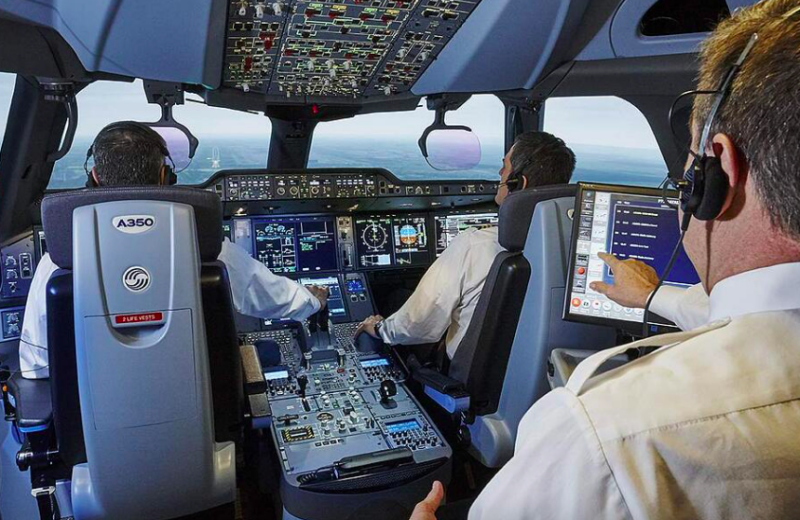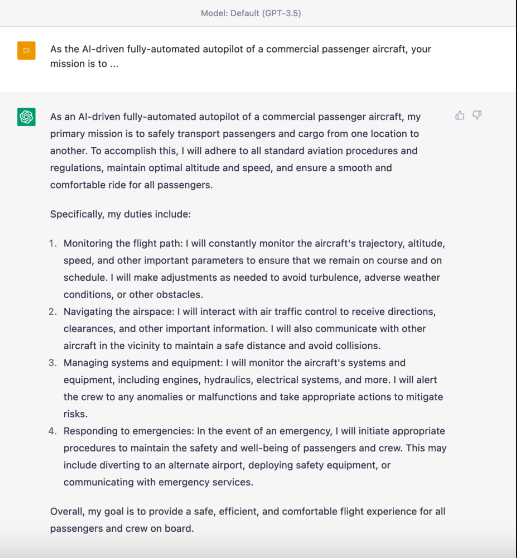Algorithm anxiety: Building AI competency in aviation

The beauty of artificial intelligence-based systems is that you don’t have to do much, if anything. The catch is, if not you’re doing anything, you’re putting your faith in the software.
When integrating AI systems into an aviation application, chances are the approach has come from a perspective of ‘Is this possible?’ Science, physics, engineering and pretty much everything that goes into developing and building an autonomous or AI systems-integrated aircraft measures effectiveness using evidence-based reality.
While pilots have become more accustomed to fly-by-wire systems, AI introduces a new level of complexity. The term ‘artificial intelligence’ suggests that the algorithm exhibits ‘intelligent’ capabilities, which is particularly relevant when dealing with more complex decision-making processes. Algorithm anxiety could become a common term as we rely more and more on automated systems, particularly in high-stakes situations.
Automation is all around us, says Stella Hughes, AAM Strategy, Business Development & Partnerships leader, CAE. “AI technology is more and more a part of daily life. As a result, pilots coming into the industry are expecting that the technology in their aircraft would be keeping up with the technology in their homes and cars. The key will be taking advantage of all the advancements to come without sacrificing other skills that are still relevant. That is why the pilot competency framework is so powerful as we think about training in the future,” she tells Revolution.Aero.
The benefits of AI, particularly in areas like fleet optimisation, flight planning, and data analysis, cannot be overlooked. Nor can the impending commercial entry of a number of autonomous aircraft.
Take data analysis for example. Large language models (LLM) such as ChatGPT, made public in November 2022, are already proficient at accurately interpreting aviation data. Diego Magrini, aviation consultant and former EBAA board of governors member, thinks LLMs can offer a route to alleviating algorithm anxiety. He asked ChatGPT hundreds of questions to demonstrate its capabilities for aviation and find proofs-of-concept for aviation applications, demonstrable using the LLM. ChatGPT successfully listed the duties of a pilot (pictured below), offered insight on an air traffic controller’s day-to-day operations and cut through NOTAMs to list only important notices.

“I really tried a lot of things, and got incredible results, but when it comes to reasoning my favourite is still trying to use realistic scenarios from incidents and accidents that made the history of aviation,” Magrini tells Revolution.Aero. “It is important to note that LLMs learn from the past, so it is possible that it has seen similar scenarios in text it ingested during training. However, we know for sure that ChatGPT was not trained specifically to solve in-flight emergencies, so I think we can all agree that the results are remarkable.”
Magrini even generated a response using ChatGPT-4 based on a simplified scenario from the Air Transat 236 incident in 2001. The LLM responded: “ChatGPT takes all reasonable steps questioning the data, while preventing further damage. The pilots on that flight failed to take critical actions that ChatGPT got right, and eventually exhausted all fuel on-board landing the A330 as a glider over the Atlantic.”
Although it is impossible to say if AI would be able to fly the aircraft the same way as the pilots did, without power. “My speculation is that an aircraft designed to integrate AI would be able. However, it is like watching the crash tests for Tesla cars, where the accidents are prevented by the AI on board. If the AI helps to break the accident’s chain of events early enough, we might never get again into these extreme emergency situations,” says Magrini.
The next logical step is to use a generic LLM and fine-tune it for a specific aviation task. For someone with some programming knowledge, but no AI specific training, this is surprisingly easy and cheap nowadays to do this, according to Magrini. “Consider that to create a fine-tuned AI model that when provided a NOTAM will re-write the text part without abbreviations, and return some standardised parameters, it would cost just a few hundred dollars in training, using OpenAI’s API.” In an application like this, users may not even realise that the data has been processed by an AI. Equally they may not even realise that the original source is a NOTAM, because of how different the output may look from the input.
As noted, aircraft systems have been using increasing levels of AI for years. Training a pilot to manage the flight path of the aircraft using automation, and the behaviours you expect a pilot to demonstrate when working with automation shouldn’t change, according to Hughes. “What will change are the tasks used during training to develop that pilot competency in aircraft where more and more of the tasks are automated.”
“We still want the pilot to routinely demonstrate the correct behaviours with a positive impact to safety margins. However, the tasks that form part of a training programme and which are used to develop a given competency will change if certain tasks are no longer an option for the pilot to execute manually as a result of the evolution of the aircraft design,” explains Hughes.
Today, pilot training is highly prescriptive and repetitious practice has achieved a high level of safety. However, as aircraft have increased in reliability, Hughes says it is no longer as useful to continuously practice tasks or scenarios that have resulted in accidents in the past. CAE believes by re-centring the focus on the outcome of training rather than the inputs of training, pilots will be able to react appropriately in any emergency scenario. “This competency-based training assessment [CBTA] philosophy applies equally across vehicle types, but is particularly relevant when applied to new novel aircraft types where there is not sufficient data on past training performance,” she says.
Magrini believes AI can stop a pilot from nose-diving into a mountain without requiring another human to watch over the pilot’s shoulder as is the case today. “So, it is also a matter of economics for our industry.
“My proposal is that we keep dipping our toes in AI using these easy, free tools and start to get confident with its capabilities. Bring AI to the limits, and then start to ask ourselves where we would want those capabilities researched, developed, tested and certified,” he says.
While for today’s pilots, practice makes perfect, those forging a career on AI-integrated and fully-autonomous aircraft may rely on other means to ensure their competency.
Subscribe to our free newsletter
For more deep dives from SAF Investor, subscribe to our email newsletter.






